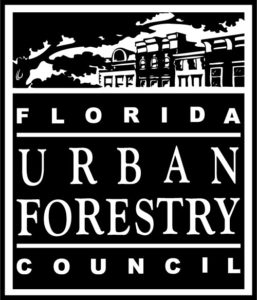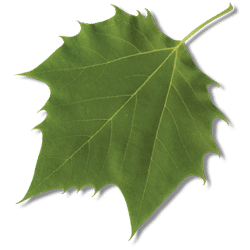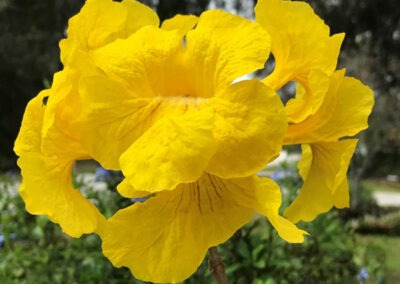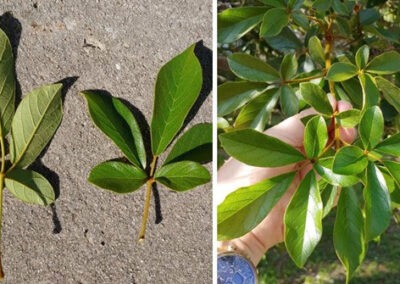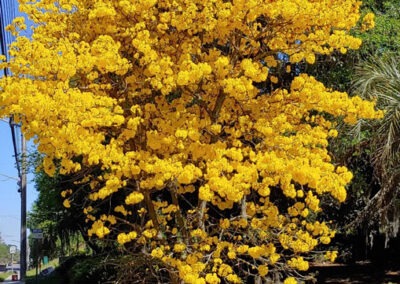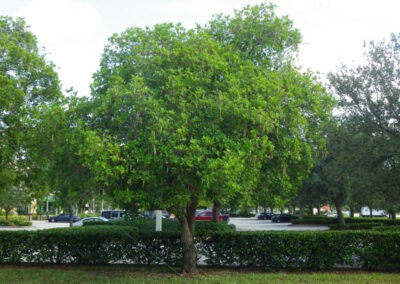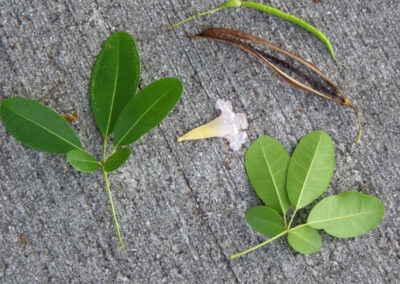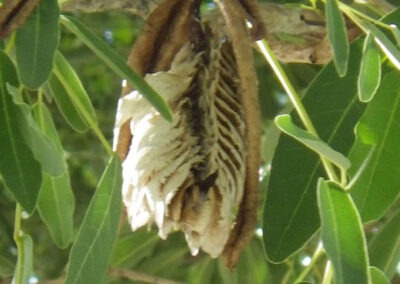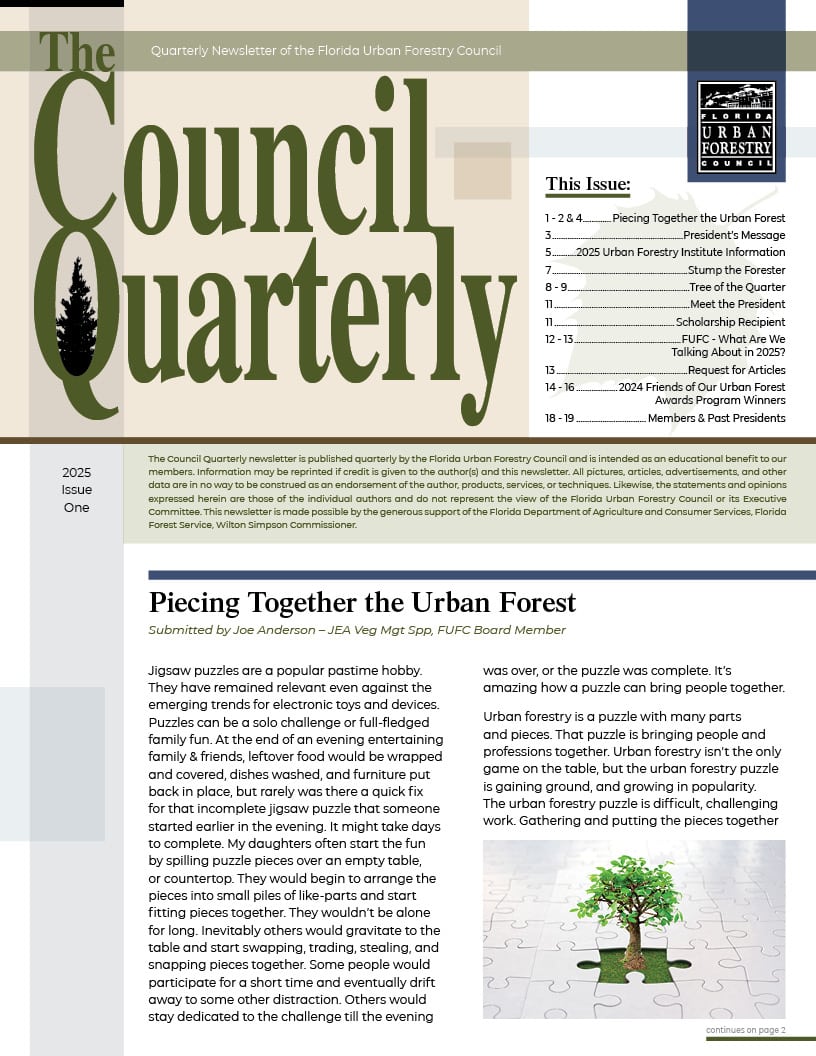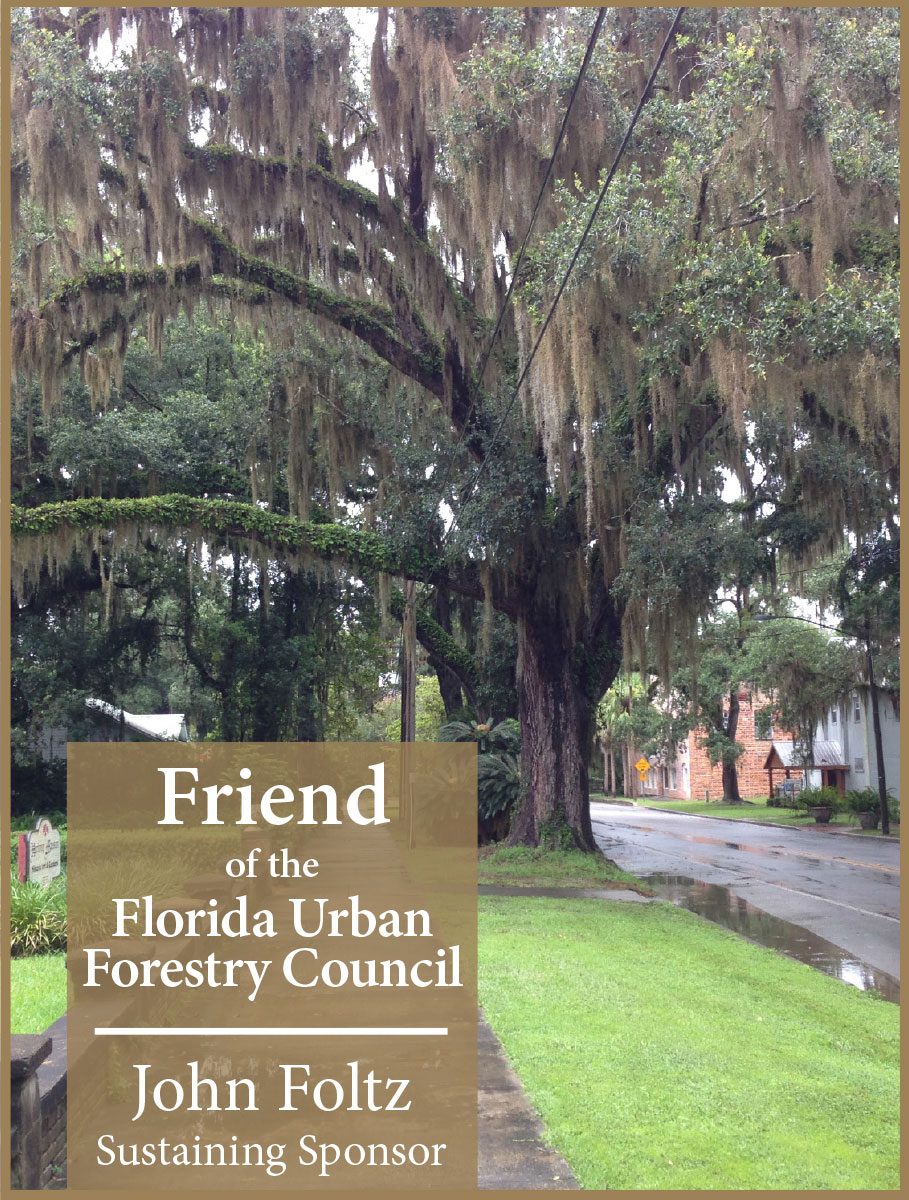Trumpet Trees Untangled
You think you know the name of a tree and then you discover that the plant taxonomists have been mixing things up. Swedish scientist Carl Linnaeus formalized a system of naming plant and animal species (binomial nomenclature) in the mid-1750s. Ever since, biologists of every stripe, vying to make a name for themselves, have been shuffling and renaming organisms within the ‘tree of life’ attempting to better understand how species are related. Those of us who have been working in the landscape for more than a few decades have had to learn new names for old plants (remember Cocos plumosa and Myrica cerifera?). Modern DNA sequencing has thrown fresh light on some old relationships – in some cases this results in changing a name, or redeeming an old name that was once changed, or even kicking something out of one genus and into another. Such was the case within the genus Tabebuia.
The family Bignoniaceae contains plants having trumpet-shaped flowers. You are likely familiar with trumpet creeper (Campsis radicans), Southern catalpa (Catalpa bignonioides), Jacaranda, African tulip tree (Spathodea campanulata), and yellow elder (Tecoma stans), all found in this distinctive family. Various Tabebuia trees, or simply ‘Tabs’, commonly planted in Florida are also found in this family but one species was moved to the genus Handroanthus due to DNA studies. As they say, “You can’t tell the players without a scorecard,” so the following table should be helpful in sorting out how names have changed:
| Old | New | Common Name |
|---|---|---|
| Tabebuia chrysotricha | Handroanthus chrysotrichus | Golden Trumpet Tree |
| Tabebuia caraiba or Tabebuia argentea | Tabebuia aurea | Silver Trumpet Tree |
| Tabebuia heterophylla | – No change – | Pink Trumpet Tree |
Handroanthus chrysotrichus, Golden Trumpet Tree
In 2007 this species was moved from Tabebuia to Handroanthus during a taxonomic revision. This small- to medium-sized tree is native to coastal Brazil south to Argentina in the seasonally dry tropical biome. Here in Florida, it can live in Hardiness Zones 9 through 11 although references differ on whether Zone 9 is appropriate. Mature 25-foot-tall specimens in Gainesville survive periodic frosts, possibly because they are deciduous during the cold winter months. It grows best in full sun and well-drained soil.
Leaves are opposite, palmately compound, having five oblong leathery leaflets that are dark green above with golden pubescence below.
Flowers are a very showy yellow in spring before leaf-out. Trees in full bloom can be a real traffic-stopper! Fruit is a long thin pubescent pod containing scale-like winged seeds. The tree pictured below in Gainesville, FL did not flower in the spring of 2023, possibly due to ill-timed cold snaps during the winter and early spring but was in glorious bloom March 2024.
Tabebuia aurea, Silver Trumpet Tree
This species is native to central South America, coast to coast, from Brazil to Argentina in the seasonally dry tropical biome. In Florida, this small- to medium-sized tree survives best in Hardiness Zones 10a to 11 and was widely planted as a street and parkway tree in South Florida in the 1970s and 80s. It has fallen a bit out of favor in recent decades due to its weak wood and propensity to break up during wind storms.
Leaves are opposite, and palmately compound with five to seven long slim silvery green leaflets. The common name also refers to the light gray rough bark.
The yellow trumpet flowers are very showy in spring prior to leaf out leading to one of its common names, Tree of Gold. Fruit is an elongated flat pod that splits open to reveal winged seeds that resemble fish scales when packed together.
Tabebuia heterophylla, Pink Trumpet Tree
Native to the Caribbean from the Bahamas through the Windward Islands, this tree thrives in the wet tropical biome where it is often grown for timber production. This small- to medium-size tree grows well in South Florida and the Keys (Hardiness Zone 10a to 11). Also known as White Cedar, it is the Territorial Tree of the British Virgin Islands where the wood was historically used to build Virgin Island sloops. In Florida, pink trumpet tree is often planted as a colorful accent due to the seasonal showy flowers.
The leaves are opposite, palmately compound, with typically 5 large rounded glossy leaflets. The large pinkish-white trumpet flowers have a pale-yellow throat and appear in spring, often along with the leaves in Florida. The fruit is a long slim pod that splits open to reveal the small papery winged seeds.
In summary, trumpet trees, collectively known as ‘Tabs’ despite the name change, can add a pop of color to many peninsular Florida landscapes where frost is rare. Their small to medium size lends them to residential yards, as street or parking lot accents, or in public parks.
